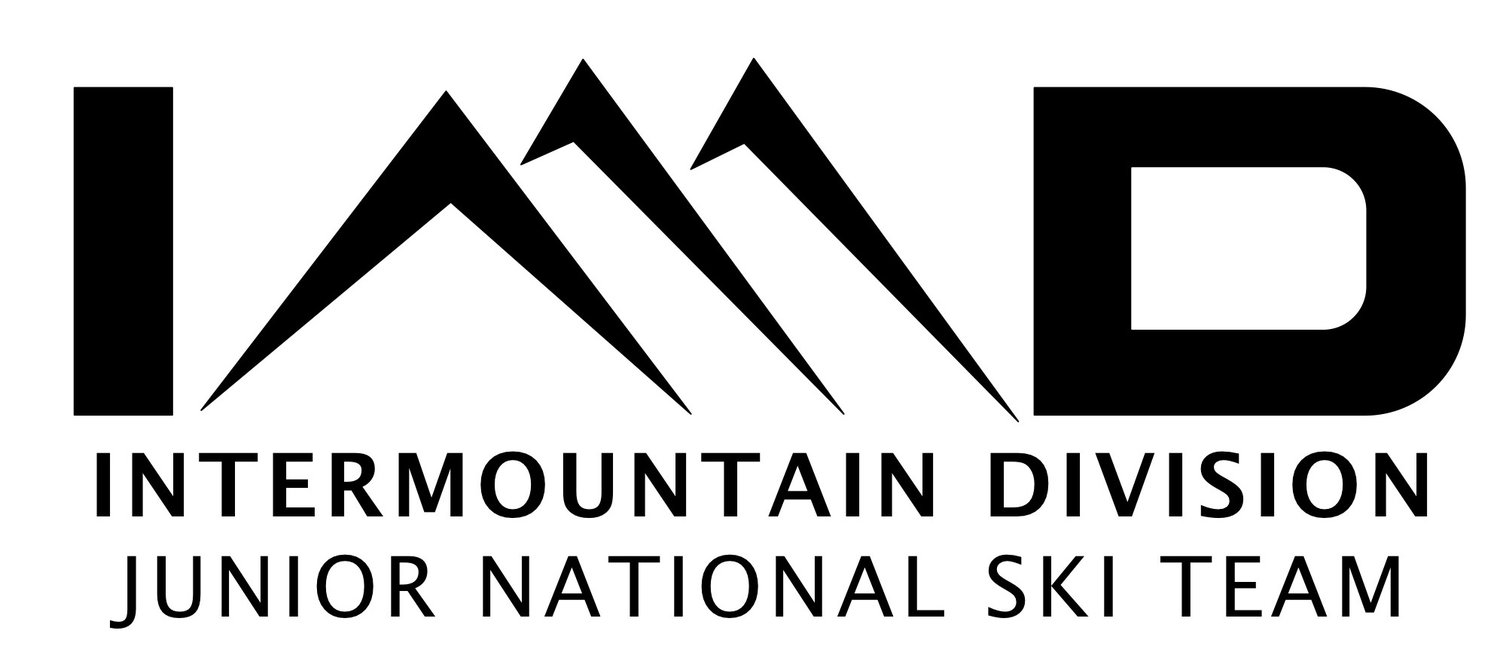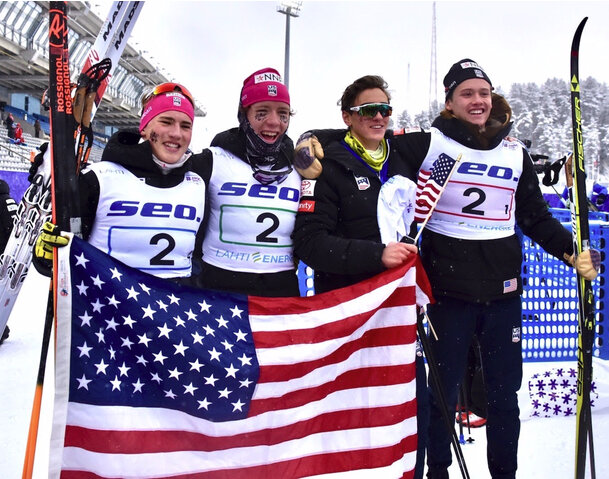From IMD to the Paralympics, the Journey of Sawyer Kesselheim
/What can an athlete do with skiing after competing within IMD? Well, that is a list too long for a blog post, but here is one story from Bozeman's Sawyer Kesselheim and how he turned his skiing career into making the skiing career of another a reality. An Paralympic reality!
Thanks for sharing your story Sawyer.
"Skiing has been a big theme in my life for the last 10 to 15 years. I started in middle school on the BSF team, then went on to MSU, and for the past two years have worked with the Paralympic team as a guide. I started out skiing for BSF in middle school because my sister was doing it and she talked me into joining. I eventually started to race, and to take it more seriously in high school. In my senior year I made Junior Nationals and had some results that made it possible for me to ski for Gretha at MSU. I spent 5 years skiing as a Bobcat and had an awesome experience. As I wrapped up my last year on the college circuit I was going back and forth about what was next. I was considering whether to continue skiing competitively, or to continue my education. I was still muddling through that process when I got an email from the Paralympic head coach, Eileen Carey. She asked if I would be interested in doing some guiding and if I would meet up for coffee to talk about it.
At that point I was not really sure what a guide did for a visually impaired (VI) skier, but it sounded like a fun way to continue skiing in a different context. My coffee with Eileen turned into a two-hour conversation, at the end of which I was pretty intrigued by the opportunity. Now, after nearly two years of guiding I am still learning better tactics and ways to be a more effective guide. Guides have different styles and duties based on the athlete they work with. Within the Visually Impaired field there are 3 categories of skiers (B1, B2, and B3). A B1 is completely blind and is required to wear black-out goggles while racing. These skiers have 88% of their time counted at the end of the race. B2’s are able to see some, and have 99% of their time counted. B3’s, which is Jake’s category, are able to see the most and have 100% of their time counted. Your classification as a VI skier is based on an eye exam that all athletes complete. All three categories race together and the times are adjusted based on your vision. All B1’s and some B2’s guides have a speaker mounted to their back in order to guide the athlete around the course. All guides ski in front of their athlete and help pace, provide a draft, and give verbal directions depending on conditions. Guides are allowed to take short cuts or tag out with a second guide, but ideally are able to race the entire race with the athlete. Guides are not allowed to pull the athlete, or skate in a classic race. If you do, you get disqualified. Our job is to help the athlete navigate the course as fast as possible.
When I walked out of the coffee shop I had pretty much committed to guiding for the next two seasons, not really knowing what my job would be or how it would impact my life. I already had plans to spend the summer at Galena Lodge, 30 miles north of Ketchum Idaho, working a seasonal job. Coincidently this was where Jake Adicoff (the athlete I would be guiding) grew up, and would be for the summer. I spent that summer working and trying to make as many intensity roller-ski sessions as I could with Jake. That winter I spent traveling to local races to stay in race shape in order to pace Jake, and teamed up for as many races with Jake as we could fit in with his busy college schedule. Last spring we were in South Korea and Japan for some Paralympic World Cup events for a few weeks. At these events Jake raced very well, making the podium in every cross-country event he was entered in. This was our first World Cup together and the experience helped me figure out some of the tactics used by other guides and understand Jake’s racing style better. At the end of last year we all met and tried to make a plan for this season that would put everyone in the best place to perform at the highest level at the Paralympics.
The biggest thing that we changed was the amount of time Jake and I spent together this winter. I spent 10 days in Quebec with the Bowdoin college team training with Jake over Thanksgiving break. A week latter I met Jake and the rest of the Para team up in Canmore, Canada for a world cup. A few days after I returned from Canmore I drove to Sun Valley where I spent the end of Christmas break training with Jake. I then flew out to Maine to join the Bowdoin team for another week of a training camp. In between training with Jake, I did local races and trained in Bozeman to prepare for the Paralympics in March.
Both Jake and I are hoping that this increased time skiing and racing together will improve our ability to ski as a cohesive unit. We are just over a week away from our first race at the Paralympics and are excited to use all the training hours we have put in to compete at our best.
Back in middle school, when I first started skiing competitively, I never would have guessed that a few years down the line, I’d be landing in South Korea to ski on the Paralympic world stage with a Visually Impaired skier. It has been an awesome experience being able to meet so many incredible people, and continue to ski with a totally new perspective."
Since Sawyer wrote this, he and Jake have called it wraps on the Paralympics and Sawyer shares his experience at the games and results with us.
"After a few months of reflection on the Paralympics in March, I have come to appreciate what an awesome experience and opportunity it was. Jake, the athlete I guided had an awesome games and was able to ramp up his ski performance throughout the entire games culminating in a silver medal in the 10k classic race.
We started the games off with a 20k skate race that proved to be one of the most difficult races of the games. It was warm slow conditions and the adjustment to being in Korea was still wearing on Jake. It was not exactly the race that he had hoped for but was still a solid performance that landed him a fifth place. Building from this performance we switched gears to prepare for a classic sprint race that was on a relatively flat fast course. The sprint day is one of the most fun days in Nordic skiing. It has a lot of head to head racing that can be exhilarating and nerve racking. Jake raced smart through all the rounds conserving energy when he was able to and putting him self in a position to advance. We made the decision to double pole the course because it was fast and there were no hills that he was unable to double pole. In the final he put it all out there and ended up in third place not far behind the leader. After the race had concluded we were informed that Jake was being protested, eventually resulting in him getting disqualified on a technicality. This mishap was disappointing but also motivated us to come back and race hard in the 10k classic just two days latter. The 10k fell on a perfect day for classic skiing, where the US wax techs nailed the wax and made it possible for Jake to race one of the smartest and most tactical races that I have ever raced with him. He pushed the pace in places where he could easily gain seconds and eased into a steady pace on sections that he knew would wear him down. This performance put him on the podium with a silver medal! The final race that we competed in was a mixed team relay. It consisted of three athletes with one athlete racing twice. It is based on a points system that designates points for each athlete and then the team must be under a set number of points. It turned out that Jake fit into the relay and had another great result. He was able to ski the second fastest time of the day on the standing course. It was a great way to end an awesome stint of racing in the Paralympics."




